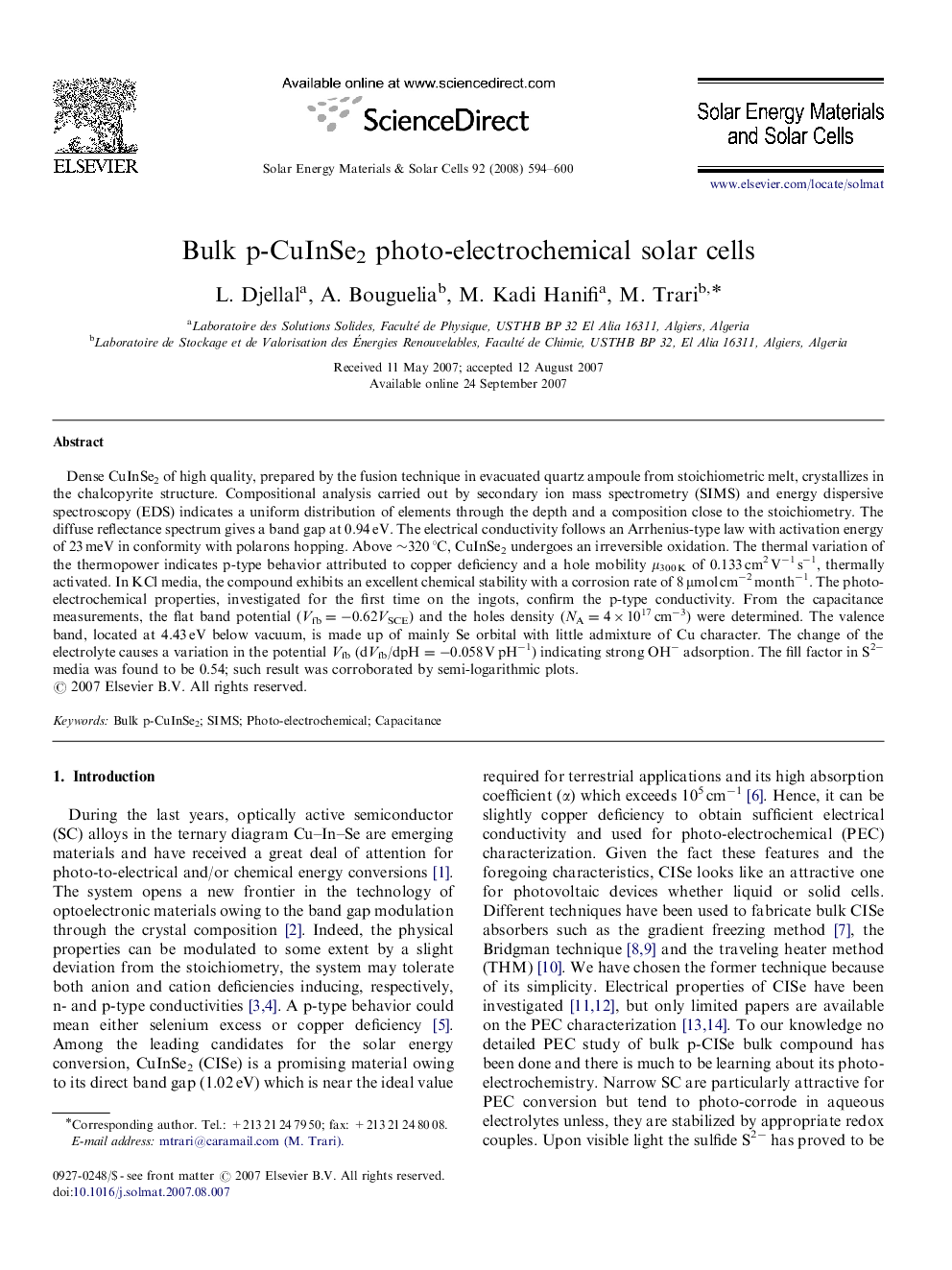| Article ID | Journal | Published Year | Pages | File Type |
|---|---|---|---|---|
| 80810 | Solar Energy Materials and Solar Cells | 2008 | 7 Pages |
Dense CuInSe2 of high quality, prepared by the fusion technique in evacuated quartz ampoule from stoichiometric melt, crystallizes in the chalcopyrite structure. Compositional analysis carried out by secondary ion mass spectrometry (SIMS) and energy dispersive spectroscopy (EDS) indicates a uniform distribution of elements through the depth and a composition close to the stoichiometry. The diffuse reflectance spectrum gives a band gap at 0.94 eV. The electrical conductivity follows an Arrhenius-type law with activation energy of 23 meV in conformity with polarons hopping. Above ∼320 °C, CuInSe2 undergoes an irreversible oxidation. The thermal variation of the thermopower indicates p-type behavior attributed to copper deficiency and a hole mobility μ300 K of 0.133 cm2 V−1 s−1, thermally activated. In KCl media, the compound exhibits an excellent chemical stability with a corrosion rate of 8 μmol cm−2 month−1. The photo-electrochemical properties, investigated for the first time on the ingots, confirm the p-type conductivity. From the capacitance measurements, the flat band potential (Vfb=−0.62VSCE) and the holes density (NA=4×1017 cm−3) were determined. The valence band, located at 4.43 eV below vacuum, is made up of mainly Se orbital with little admixture of Cu character. The change of the electrolyte causes a variation in the potential Vfb (dVfb/dpH=−0.058 V pH−1) indicating strong OH− adsorption. The fill factor in S2− media was found to be 0.54; such result was corroborated by semi-logarithmic plots.
